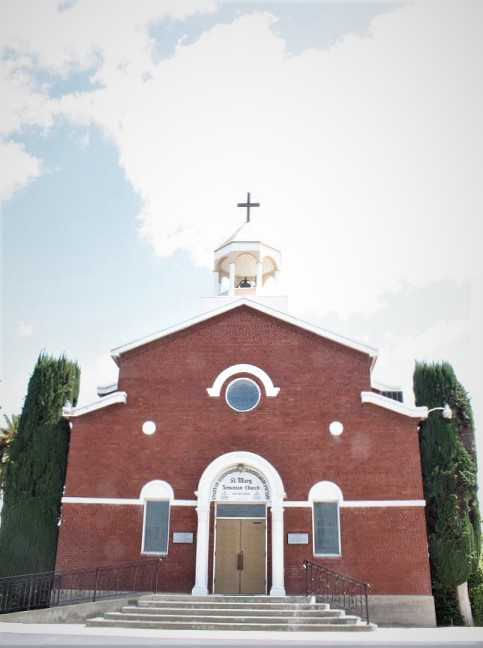 The East Kaweah Groundwater Sustainability Agency held its Advisory Committee meeting on Monday, September 21, 2020 on Zoom. This could be more interesting than your average GSA Advisory Committee meeting as there is an item on the agenda about allocation of groundwater. One of the folks who live in the area, have followed this since the beginning and has put in the time to learn more about things – Karen Yohannes submitted a paper with ideas on the subject. One of the better parts of SGMA is local control. Here we seen a member of the public not a lawyer, not an engineer and not a professional water manager contributing to the outcome.
The East Kaweah Groundwater Sustainability Agency held its Advisory Committee meeting on Monday, September 21, 2020 on Zoom. This could be more interesting than your average GSA Advisory Committee meeting as there is an item on the agenda about allocation of groundwater. One of the folks who live in the area, have followed this since the beginning and has put in the time to learn more about things – Karen Yohannes submitted a paper with ideas on the subject. One of the better parts of SGMA is local control. Here we seen a member of the public not a lawyer, not an engineer and not a professional water manager contributing to the outcome.
Chairman Joe Ferrara opened the meeting a little after 4:00pm. The agenda was approved and under public comment a gentleman named Rex asked about pumping plants on land that doesn’t produce ag products will be addressed. General Manger Mike Hagman thanked him for bringing this up. There is a pump on an acre of land that puts water in a canal and sends it several miles away. Both Ferrara and Hagman said this will be considered and moving forward will be addressed. The minutes were approved. Ferrara is an affable and intelligent man – he asked for all those not approving the minutes to say so. Everyone was pro-minutes as presented so the vote went faster.
An EKGSA activity report was given by Hagman. He started with having Matt Klinchuch of Provost & Pritchard. report on the Technical Committee meeting and Klinchuch said there are some grant matters that were discussed and will be discussed in the future.
Hagman reported there was a board meeting last month and Cruz Romero reported on monitoring well construction. He has met some reluctance with the landowners and sees a great deal of ignorance from folks. He said its like going door to door to proselytize and do sales. Hagman said there is a need for a better door to door salesman – he thinks a farmer to farmer approach will work better. Justine Massey Community Water Center suggested a groundwater monitoring workshop and that sounded good.
The Kaweah Sub Basin activity report was next and Hagman said the Prop 68 Resource Conservation Investment Strategy (thanks to Stacie Ann Silva for helping decipher that one.) Hagman has submitted the Prop 68 planning grant bill to the state. This includes Sky Temp airborne magnetic imaging of soil types and other informational data. The Prop 68 money will help fund Provost & Pritchard do well videos and a meter analysis from Fresno State University. The FSU folks had a long, three-hour survey that should be a big contribution for determining what type of a metering system is needed.
Ferrara instructed Hagman to take up the issue of the Groundwater Sustainability Plan. Specifically the designation of rights to groundwater and regulation authority. Hagman explained this policy will not supersede water-law but under SGMA the GSAs are tasked with regulation of extracting groundwater within the GSA boundary.
Hagman recapped the three types of inflow sources; native supply like the Kaweah River, foreign supply like San Joaquin River water brought in by the Friant Kern Canal and salvaged supply which is supply stored or treated by an appropriator. He said all lands within the EKGSA has an overlaying right to groundwater. EKGSA doesn’t control or regulate land-use.
An example was a Friant contractor may bring water in and it might percolate into the soil due to channel loss but that water would remain water belonging to that Friant contractor. Extraction of that water would be regulated by the GSA.
Massey said there is a situation where a landowner is benefiting from recharge from some channel lose but his well is still dry. Who will be responsible for this water and who will get credit was her interest. Hagman said an individual using a domestic well under two acre feet per year is de minimis. Massey said this sounded fair. Good for her.
Yohannes asked if foreign and salvaged supply is assumed to be surface supply and it is. She also asked how on-farm recharge will be handled. Hagman said this could well fall under credit at the GSA level. He said if someone recharged next to the river and tried to claim it several miles away upgradient may have to face some rejection.
Next Hagman said the draft of this policy doesn’t state how much water will be allocated but it does state how the framework will be implemented. Hagman said a landowner on rangeland who pumps 200 acre feet will be charged for that water. Hagman said there is 90,000 or so a/f to be allocated once you remove the cities and suburban areas. Another question is how long can you claim recharged water. You put in an acre foot and don’t pump for three years is there enough drift to lose claim to that water?
Hagman said an allocated supply will cover from April 1st to March 31st of the next year. Which brings up carryover. Allan Lombardi asked how this doesn’t impact the overlying right of a landowner. Why can’t a landowner claim carryover? Hagman said there are very likely holes in this draft and this issue has to be further explored. Soapy Mulholland asked if SGMA didn’t change the overlying rule and Hagman said the law prevents a well owner to pump so much that a neighbor could be harmed. SGMA makes the GSA the neighbor with six harmful conditions that must be avoided.
Hagman said the water balance ensures all of the allocation will be used. I asked what would happen if some one was concerned about losing carryover and pumped to flood irrigate their own land. Hagman said that would be a waste of water and a waste of power as well. He said the policy is requiring landowners to state what amount of allocation will be used. If more is used there could be a fee attached. If less is used there may not be carryover allowed. He said this all needs to be vetted by an attorney but staff has received very little direction. This document is the attempt to move from planning to implementation. Matt Watkins spoke up saying the carryover portion may not be refined enough to send on to the board. Craig Wallace said carryover of native groundwater will need to be part of any policy.
Silva asked if the allocation method will differ each year and Hagman said that will necessitate more practical experience but the goal is to be ready by 2025. The last point was landowners using more groundwater than allocated or if they never made an allocation request will be subject to penalties. Hagman said the carryover issue needs to be rethought.
Groundwater pumping quantification was the next item and Hagman asked everyone to remember the numbers presented are more placeholders than proposed facts. There will be an annual assessment and a $180 per non-abandoned well. A landowner, within 90-days of the end a calendar quarter a bill for ET from a given acre/parcel under ownership will be charged from a table ranging from a half a/f for $25 through six tiers until the cost is $350 a/f. In addition to this there is a $100 a/f for used in excess of the allocation. The more you use the more you pay. Again the number of acre feet and the amount of money are not being proposed.
John Yohannes said knowing how long the groundwater remains in the area would be  very helpful in planning and carryover.
very helpful in planning and carryover.
Silva suggested Land IQ could submit the ET to the districts and let the GSA determine allocations that way. Yohannes said she didn’t have the confidence in Land IQ and it removes one more management option. Silva said she only recommended that because the actual practice won’t begin until 2025 and that would give everyone a chance to vet Land IQ. It was suggested by Blanca Escobedo of the Leadership Council for Justice and Accountability to use both methods between now and 2025 to determine which works best.
Hagman said getting all the revenue needed for the GSAs management actions is a challenge. He said tiered pricing helps to ease the pain and spread the costs. There is another $40 million in projects needed. He said monetizing the water sales will be helpful. There is a 100,000 a/f shortfall in the Kaweah Sub Basin that needs to be solved.
Unfortunately there wasn’t time to review Yohannes’ policy template mentioned above. Hagman said the board is interested in all options and will address it. That was all the items to cover. Ferrara said the next meeting will be October 19th, same 4:00pm start time. The meeting lasted two hours. Ferrara thanked everyone for participating and the screen went where ever Zoom screens go when they die.
DISCLAIMER OF RESPONSIBILITY; Waterwrights strives to provide his clients with the most complete, up-to-date, and accurate information available. Nevertheless, Waterwrights does not serve as a guarantor of the accuracy or completeness of the information provided, and specifically disclaims any and all responsibility for information that is not accurate, up-to-date, or complete. Waterwrights’ clients therefore rely on the accuracy, completeness and timeliness of information from Waterwrights entirely at their own risk. The opinions expressed in this report are those of the author and do not represent any advertisers or third parties.
ALL RIGHTS RESERVED. Copyright 2020 by WaterWrights.net
SGMA The Sustainable Groundwater Management Act of 2014 calls for the formation of Groundwater Sustainability Areas within Basins and Sub-basins to develop Groundwater Sustainability Plans.
EAST KAWEAH GSA 315 E. Lindmore Street, Lindsay, CA 93247. Telephone 559/562-2534. Mailing address PO Box 908 Lindsay, CA 93247
Members: County of Tulare, City of Lindsay, Exeter ID, Ivanhoe ID, Lindsay Strathmore ID, Lindmore ID and Stone Corral ID
Staff: Michael Hagman – Executive Director, Joe Hughes – Attorney
DWR Listing: Basin San Joaquin Valley, Sub Basin Kaweah 5-022.11
































